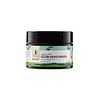What's inside
What's inside
 Key Ingredients
Key Ingredients

 Benefits
Benefits

 Concerns
Concerns

No concerns
 Ingredients Side-by-side
Ingredients Side-by-side

Water
Skin ConditioningNiacinamide
SmoothingSqualane
EmollientCaprylic/Capric Triglyceride
MaskingSodium Acrylates Copolymer
Lecithin
EmollientAlpha-Arbutin
AntioxidantPrunus Amygdalus Dulcis Oil
Skin ConditioningMaltodextrin
AbsorbentPunica Granatum Flower Extract
Skin ConditioningSodium Ascorbyl Phosphate
AntioxidantGlycyrrhiza Glabra Root Extract
BleachingHamamelis Virginiana Extract
AntiseborrhoeicCitrus Medica Limonum Peel Extract
EmollientCitrus Aurantium Dulcis Peel Extract
Emulsion StabilisingSodium Hyaluronate
HumectantSodium Benzoate
MaskingPotassium Sorbate
PreservativeCarbomer
Emulsion StabilisingPanthenol
Skin ConditioningPhenoxyethanol
PreservativeEthylhexylglycerin
Skin ConditioningTocopheryl Acetate
AntioxidantSodium Gluconate
Skin ConditioningRosa Damascena Flower Oil
MaskingTurtle Oil
Skin ConditioningCitrus Aurantium Bergamia Fruit Oil
MaskingWater, Niacinamide, Squalane, Caprylic/Capric Triglyceride, Sodium Acrylates Copolymer, Lecithin, Alpha-Arbutin, Prunus Amygdalus Dulcis Oil, Maltodextrin, Punica Granatum Flower Extract, Sodium Ascorbyl Phosphate, Glycyrrhiza Glabra Root Extract, Hamamelis Virginiana Extract, Citrus Medica Limonum Peel Extract, Citrus Aurantium Dulcis Peel Extract, Sodium Hyaluronate, Sodium Benzoate, Potassium Sorbate, Carbomer, Panthenol, Phenoxyethanol, Ethylhexylglycerin, Tocopheryl Acetate, Sodium Gluconate, Rosa Damascena Flower Oil, Turtle Oil, Citrus Aurantium Bergamia Fruit Oil
Water
Skin ConditioningNiacinamide
SmoothingPanthenol
Skin ConditioningSodium Polyacryloyldimethyl Taurate
Emulsion StabilisingHydrogenated Polydecene
EmollientTrideceth-10
CleansingGlycerin
HumectantDiheptyl Succinate
EmollientCapryloyl Glycerin/Sebacic Acid Copolymer
Skin ConditioningCamellia Sinensis Leaf Extract
AntimicrobialCaffeine
Skin ConditioningCaprylic/Capric Triglyceride
MaskingPhenoxyethanol
PreservativeEthylhexylglycerin
Skin ConditioningIngredients Explained
These ingredients are found in both products.
Ingredients higher up in an ingredient list are typically present in a larger amount.
This ingredient is an emollient, solvent, and texture enhancer. It is considered a skin-softener by helping the skin prevent moisture loss.
It helps thicken a product's formula and makes it easier to spread by dissolving clumping compounds.
Caprylic Triglyceride is made by combining glycerin with coconut oil, forming a clear liquid.
While there is an assumption Caprylic Triglyceride can clog pores due to it being derived from coconut oil, there is no research supporting this.
Learn more about Caprylic/Capric TriglycerideEthylhexylglycerin (we can't pronounce this either) is commonly used as a preservative and skin softener. It is derived from glyceryl.
You might see Ethylhexylglycerin often paired with other preservatives such as phenoxyethanol. Ethylhexylglycerin has been found to increase the effectiveness of these other preservatives.
Niacinamide is a multitasking form of vitamin B3 that strengthens the skin barrier, reduces pores and dark spots, regulates oil, and improves signs of aging.
And the best part? It's gentle and well-tolerated by most skin types, including sensitive and reactive skin.
You might have heard of "niacin flush", or the reddening of skin that causes itchiness. Niacinamide has not been found to cause this.
In very rare cases, some individuals may not be able to tolerate niacinamide at all or experience an allergic reaction to it.
If you are experiencing flaking, irritation, and dryness with this ingredient, be sure to double check all your products as this ingredient can be found in all categories of skincare.
When incorporating niacinamide into your routine, look out for concentration amounts. Typically, 5% niacinamide provides benefits such as fading dark spots. However, if you have sensitive skin, it is better to begin with a smaller concentration.
When you apply niacinamide to your skin, your body converts it into nicotinamide adenine dinucleotide (NAD). NAD is an essential coenzyme that is already found in your cells as "fuel" and powers countless biological processes.
In your skin, NAD helps repair cell damage, produce new healthy cells, support collagen production, strengthen the skin barrier, and fight environmental stressors (like UV and pollution).
Our natural NAD levels start to decline with age, leading to slower skin repair, visible aging, and a weaker skin barrier. By providing your skin niacinamide, you're recharging your skin's NAD levels. This leads to stronger, healthier, and younger looking skin.
Another name for vitamin B3 is nicotinamide. This vitamin is water-soluble and our bodies don't store it. We obtain Vitamin B3 from either food or skincare. Meat, fish, wheat, yeast, and leafy greens contain vitamin B3.
The type of niacinamide used in skincare is synthetically created.
Learn more about NiacinamidePanthenol is a common ingredient that helps hydrate and soothe the skin. It is found naturally in our skin and hair.
There are two forms of panthenol: D and L.
D-panthenol is also known as dexpanthenol. Most cosmetics use dexpanthenol or a mixture of D and L-panthenol.
Panthenol is famous due to its ability to go deeper into the skin's layers. Using this ingredient has numerous pros (and no cons):
Like hyaluronic acid, panthenol is a humectant. Humectants are able to bind and hold large amounts of water to keep skin hydrated.
This ingredient works well for wound healing. It works by increasing tissue in the wound and helps close open wounds.
Once oxidized, panthenol converts to pantothenic acid. Panthothenic acid is found in all living cells.
This ingredient is also referred to as pro-vitamin B5.
Learn more about PanthenolPhenoxyethanol is a preservative that has germicide, antimicrobial, and aromatic properties. Studies show that phenoxyethanol can prevent microbial growth. By itself, it has a scent that is similar to that of a rose.
It's often used in formulations along with Caprylyl Glycol to preserve the shelf life of products.
Water. It's the most common cosmetic ingredient of all. You'll usually see it at the top of ingredient lists, meaning that it makes up the largest part of the product.
So why is it so popular? Water most often acts as a solvent - this means that it helps dissolve other ingredients into the formulation.
You'll also recognize water as that liquid we all need to stay alive. If you see this, drink a glass of water. Stay hydrated!
Learn more about Water